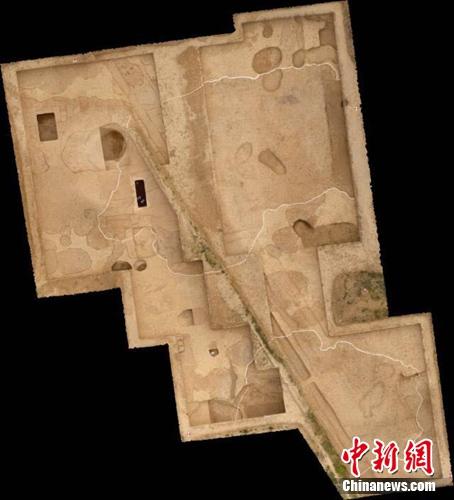 |
|
The southeast corner of the imperial palace discovered at the Taosi relic site in Xiangfen County of north China’s Shanxi Province. [Photo/Chinanews.com]
|
Archeologists have dated the ruins in the northeast of the Taosi relic site in Xiangfen County to around 4000 years ago.
They are believed to provide important evidence of China’s capital city system, officials from Shanxi institute of archaeology told Chinanews.com.
“We’ve been exploring the southeast corners of the palace since 2017. Basically, this palace has been completely preserved. It demonstrates a self-contained system and rigorous structure, with outstanding defensive function. It’s the earliest imperial city discovered in China so far”, said Gao Jiangtao with the Institute of Archaeology at the Chinese Academy of Social Sciences.
 |
|
A photo shows the southeast gate of the imperial palace discovered in the Taosi relic site in Xiangfen County of north China’s Shanxi Province. [Photo/Chinanews.com]
|
Rectangular in shape, the site is about 470 meters in length from the east to the west, and some 270 meters in width from south to the north.
Spanning an area of about 130,000 square meters, the palace is composed of a north wall, east wall, south wall, and west wall. Only the foundations of the city walls remain, although some corners which have also been destroyed.
In ancient times, such imperial cities are indicative of a class division, with the living quarters of civilians separated from those of the royal family.
Archeologists point out that the Taosi imperial palace may indicate the beginnings of the capital system in ancient China.
The Taosi relics site covers an area of 3 million square meters. It is believed to be a settlement of the period of the five legendary rulers (2,600 BC-1,600 BC) in Chinese history.
read more



